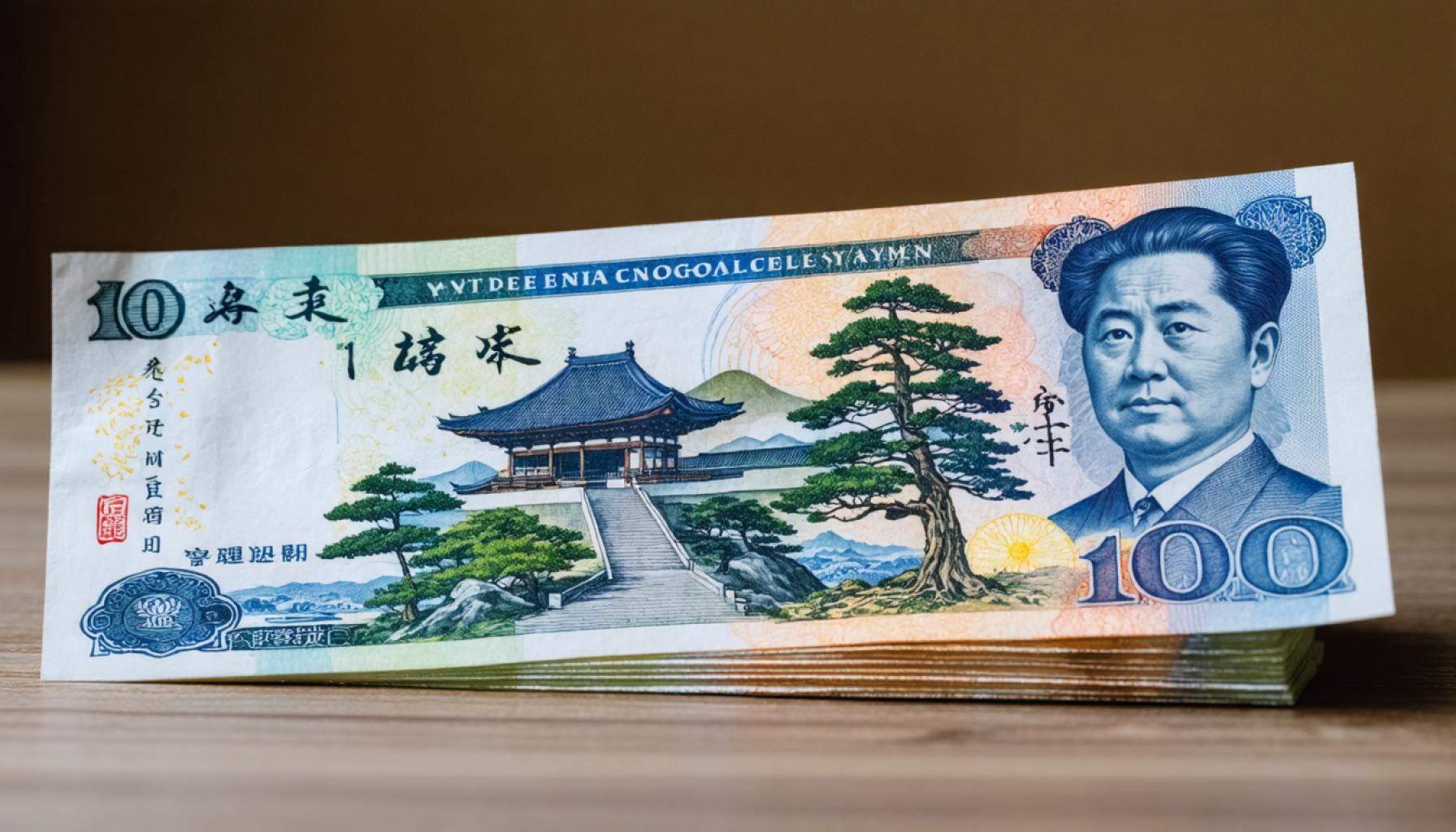- Japan’s yen has surged, reaching its strongest position since early December, with the USD/JPY rate near a critical 150.00 mark.
- The yen has gained 4.8% against the US dollar and 4% against the euro, outperforming its G10 currency peers.
- Narrowing interest rate gaps, especially a 50-basis point drop between US and Japanese 10-year bonds, have strengthened the yen’s appeal.
- Japan’s 10-year bond yields have reached a decade-high of 1.45%, driven by significant bond sell-offs.
- Speculation surrounds the Bank of Japan’s potential interest rate hikes, following a recent adjustment to 0.50%.
- Japan’s economic outlook remains optimistic, with last year’s GDP growth exceeding expectations, including a significant 2.8% rise in Q4.
- Investors are watching for upcoming market developments, including rate adjustments and wage negotiations, which could further boost the yen.
The streets of Tokyo hum with renewed vigor as Japan’s yen reclaims its strength on the global stage. This week, the yen surged to its most robust position since early December, with the USD/JPY rate stalling near a critical 150.00 threshold. Bloomberg’s insights reveal the yen has eclipsed its G10 peers with a striking 4.8% rise against the US dollar and 4% against the euro this year alone.
The linchpin of this resurgence is the narrowing interest rate gap between Japan and other major economies. A steep 50-basis point drop in the yield gap of 10-year US and Japanese bonds—from a January peak to historic lows—has bolstered the yen’s allure. Adding fuel to this ascendant trajectory, Japan’s bonds are witnessing a pronounced sell-off, propelling 10-year yields to a decade-record 1.45%.
Hints of a hawkish tilt from the Bank of Japan (BoJ) linger in the air, amid speculation of further interest rate hikes following the recent shift to 0.50%. BoJ’s Governor Ueda’s rendezvous with Prime Minister Ishiba, though silent on immediate rate changes, underscores the nation’s guarded optimism about the economic outlook. Japan’s GDP growth surpassing expectations last year has fortified this stance, highlighting a burgeoning 2.8% rise in Q4 alone.
Investors now tune keenly to Japan’s upcoming market movements, especially with anticipated rate adjustments and looming labor negotiations—indicators that could further embolden the yen’s supremacy. As global markets sway, the yen’s strengthened pulse echoes Japan’s resilient economic spirit, poised to redefine its position in the international arena.
Unraveling the Yen’s Surge: What It Means for You and the Global Economy
How-To Steps & Life Hacks
For investors and travelers, understanding currency fluctuations is crucial. Here’s how you can capitalize on the yen’s resurgence:
For Investors:
1. Monitor Interest Rates: Keep an eye on changes in Japanese interest rates and bond yields. A hawkish stance from the Bank of Japan (BoJ) could signal further appreciation of the yen.
2. Diversify Investments: Consider funds or ETFs that are exposed to Japanese equities or currency to hedge against local currency depreciation.
3. Evaluate FOREX Positions: If you’re trading Forex, this could be a time to reassess positions concerning the yen, especially in USD/JPY and EUR/JPY pairs.
For Travelers:
1. Book Early: Secure travel deals now to lock in favorable exchange rates, as further appreciation of the yen could increase costs.
2. Currency Exchange: Exchange currency in advance to take advantage of the current rate before any potential depreciation.
Real-World Use Cases
– Exporters and Importers: Businesses involved in Japanese trade should adjust their pricing strategies to accommodate currency volatility.
– Tourism: Tour operators might reevaluate Japan tour pricing, given the potential increase in costs for foreign tourists.
Market Forecasts & Industry Trends
According to latest analyses, the yen’s strengthening might continue if the BoJ proceeds with interest rate hikes. Analysts suggest a gradual appreciation trend which could impact global markets [source: Bloomberg].
Reviews & Comparisons
Japanese Yen vs. Other Currencies:
– Against the US Dollar (USD): The yen has shown a remarkable recovery, signaling potential long-term bullish trends.
– Against the Euro (EUR): A notable rise in value could make Japanese imports more expensive for the Eurozone.
Controversies & Limitations
Experts warn that rapid yen appreciation can hurt Japanese exporters who benefit from a weaker yen. Moreover, ongoing geopolitical tensions can impact currency stability [source: Financial Times].
Features, Specs & Pricing
Gravitate towards yen futures contracts or currency ETFs that focus on the yen for speculative or hedging purposes. Pricing models vary, so review fees and past performance when considering investments.
Security & Sustainability
Japan’s economic resilience sets a strong foundation for the yen, but external factors like the US Federal Reserve’s policies can create fluctuations. The BoJ is committed to strategic interest rate adjustments as a key sustainability measure [source: BoJ official reports].
Insights & Predictions
Economic indicators suggest yen’s stabilization, supported by Japan’s strong GDP growth figures and cautious monetary policies. Analysts predict yen might settle in with moderate gains by end of the next quarter.
Pros & Cons Overview
Pros:
– Increased yen strength provides better purchasing power overseas.
– Attractive yields for Japanese bond investors.
Cons:
– Potential adverse impact on Japanese exporters.
– Travel to Japan might become more expensive for foreigners.
Actionable Recommendations
– For Investors: Maintain vigilance on global interest rate changes and geopolitical events.
– For Travelers: Plan trips to Japan at the current rates but remain flexible with travel dates.
Employ these strategies and insights to navigate the implications of Japan’s thriving yen market and strengthen your financial acumen. Consider visiting professional finance sites like Bloomberg for further updates.
